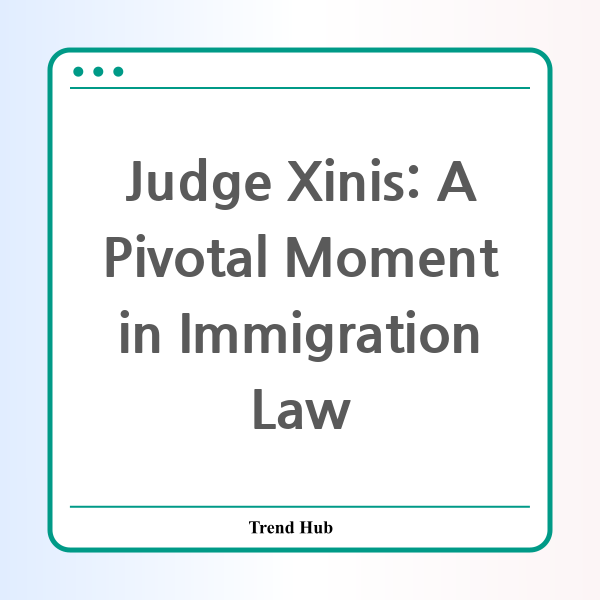* This website participates in the Amazon Affiliate Program and earns from qualifying purchases.

Judge Xinis vs. the Trump Administration: What’s Next for Immigration Law?
As the political landscape continues to shift in the United States, one name that is becoming increasingly significant in legal discussions surrounding immigration policy is Judge Paula Xinis. With her recent rulings during the ongoing case of Kilmar Armando Abrego Garcia, the spotlight is on how judicial actions are shaping the legal framework of immigration, especially under the Trump administration.
In a notable hearing at the federal courthouse in Greenbelt, Maryland, Judge Xinis didn’t hold back in her demands for the Trump administration to comply with court orders regarding the case of Kilmar Armando Abrego Garcia. Garcia, a Salvadoran man wrongfully deported to a notorious prison in El Salvador, has become a symbol of the Trump administration’s strict immigration policies.
Judge Xinis has outlined a tight timeline for the Justice Department, requiring them to prepare questions and documents regarding the administration’s actions—or lack thereof—concerning Garcia’s case. This proactive approach highlights the judiciary's role in holding governmental bodies accountable to uphold the law.
The judge emphasized that the administration cannot simply wait for action from third parties, asserting that they must take active steps to facilitate Garcia's return. The determination of whether the government is acting in good faith becomes a crucial point as Xinis maneuvers through the legal complexities presented in this case.
Judge Xinis's courtroom demeanor signifies a refusal to tolerate delays or evasions. As she stated, “I’m usually pretty good about this in my courtroom, but not this time,” indicating the seriousness of the matter at hand. This determination comes on the heels of a Supreme Court ruling that imposes certain responsibilities on the White House regarding immigration cases.
The contrast between Garcia's situation and that of Muneer Subaihani, another immigrant who was wrongfully deported during Trump’s first term, reveals a notable shift in the administration's reaction to similar cases. While the government took swift action to rectify Subaihani's deportation mistake, the current administration's approach toward Garcia is markedly passive. This inconsistency raises questions about the motivations driving Trump’s immigration policies and their implications on individual rights.
Additionally, the stark differences in handling these cases reflect the broader trend of the Trump administration’s defiance of court orders and its tendency to prioritize a tough-on-immigration stance. This approach is not only politically charged but poses significant legal ramifications that could set precedents for future cases.
As politicians and legal experts watch closely, Judge Xinis's rulings over the next few weeks could have lasting effects, potentially reshaping how immigration cases are managed under any administration. Her firm stance against perceived administrative inaction reinforces the necessity of judicial oversight in immigration matters, showcasing the judiciary as a crucial check on executive power.
Overall, the developments surrounding Judge Xinis and the Abrego Garcia case exemplify the ongoing struggle between legislative intent, executive action, and judicial review in the realm of immigration law. As we navigate through these unprecedented times, the outcomes of such cases will undoubtedly inform public discourse and policy on immigration for years to come. Stay tuned as we follow the proceedings and analyze their implications on future legal frameworks.
* This website participates in the Amazon Affiliate Program and earns from qualifying purchases.